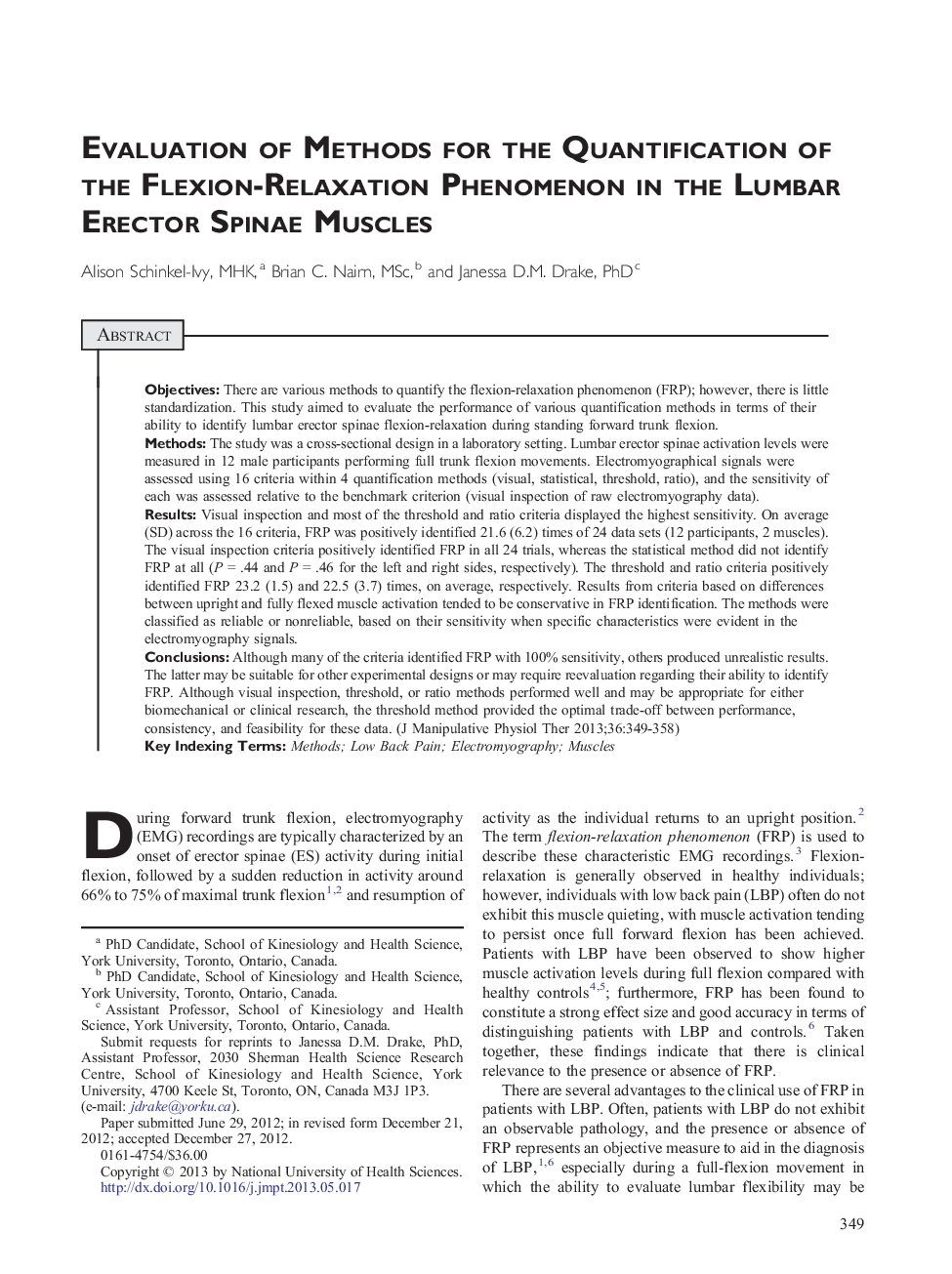| کد مقاله | کد نشریه | سال انتشار | مقاله انگلیسی | نسخه تمام متن |
|---|---|---|---|---|
| 2620784 | 1135649 | 2013 | 10 صفحه PDF | دانلود رایگان |

ObjectivesThere are various methods to quantify the flexion-relaxation phenomenon (FRP); however, there is little standardization. This study aimed to evaluate the performance of various quantification methods in terms of their ability to identify lumbar erector spinae flexion-relaxation during standing forward trunk flexion.MethodsThe study was a cross-sectional design in a laboratory setting. Lumbar erector spinae activation levels were measured in 12 male participants performing full trunk flexion movements. Electromyographical signals were assessed using 16 criteria within 4 quantification methods (visual, statistical, threshold, ratio), and the sensitivity of each was assessed relative to the benchmark criterion (visual inspection of raw electromyography data).ResultsVisual inspection and most of the threshold and ratio criteria displayed the highest sensitivity. On average (SD) across the 16 criteria, FRP was positively identified 21.6 (6.2) times of 24 data sets (12 participants, 2 muscles). The visual inspection criteria positively identified FRP in all 24 trials, whereas the statistical method did not identify FRP at all (P = .44 and P = .46 for the left and right sides, respectively). The threshold and ratio criteria positively identified FRP 23.2 (1.5) and 22.5 (3.7) times, on average, respectively. Results from criteria based on differences between upright and fully flexed muscle activation tended to be conservative in FRP identification. The methods were classified as reliable or nonreliable, based on their sensitivity when specific characteristics were evident in the electromyography signals.ConclusionsAlthough many of the criteria identified FRP with 100% sensitivity, others produced unrealistic results. The latter may be suitable for other experimental designs or may require reevaluation regarding their ability to identify FRP. Although visual inspection, threshold, or ratio methods performed well and may be appropriate for either biomechanical or clinical research, the threshold method provided the optimal trade-off between performance, consistency, and feasibility for these data.
Journal: Journal of Manipulative and Physiological Therapeutics - Volume 36, Issue 6, July–August 2013, Pages 349–358